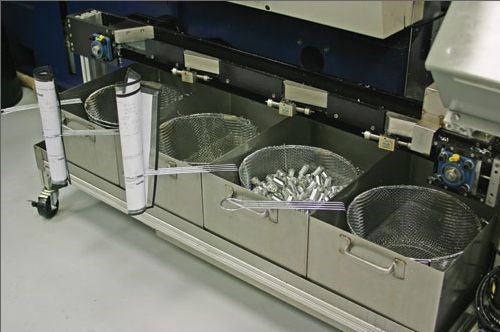Lights out Output
For lights-out machining, being able to efficiently backtrack from smaller batches if something goes wrong helps identify when an error occurred.
Share







For lights-out machining, being able to efficiently backtrack from smaller batches if something goes wrong helps identify when an error occurred.
Everybody is trying to go lights out. It just makes sense to make parts virtually labor-free for a shift or two. So here’s a question: When you turn the lights on, what do you have? Well, hopefully you have a large quantity of good parts.
Usually, longer-running parts are delegated to untended machining. Consequently, at the end of the shift there are bins full of machined parts. Although I’m sure your shop has never experienced this, sometimes something happens in the machining process that causes the part to go out of spec sometime during the night.
The problem is figuring out when the incident occured and how many parts are affected. Short of inspecting the entire batch to find these renegade parts, there may be a simpler way to at least narrow the search. I came across one such device in a lights-out shop in Chicago that runs its eight-spindle Tornos untended. Of course, a multi-spindle makes a lot of parts quickly.
These guys came up with a programmable part separator, built in-house. Finished parts can be diverted to or four discharge baskets at programmed intervals. For lights-out machining, this nifty device allows the shop to backtrack from smaller batches if something goes wrong, and it helps identify when an error occurred.
.
Related Content
-
3 Ways Artificial Intelligence Will Revolutionize Machine Shops
AI will become a tool to increase productivity in the same way that robotics has.
-
Using Automation to Reduce COGS and Stay Globally Competitive
Decade-long, multiphase automation investments lower operating costs and maintain technology lead in an increasingly competitive global market.
-
Inside the Premium Machine Shop Making Fasteners
AMPG can’t help but take risks — its management doesn’t know how to run machines. But these risks have enabled it to become a runaway success in its market.













